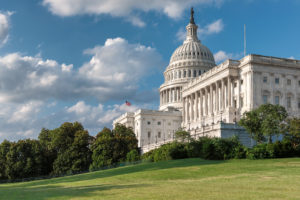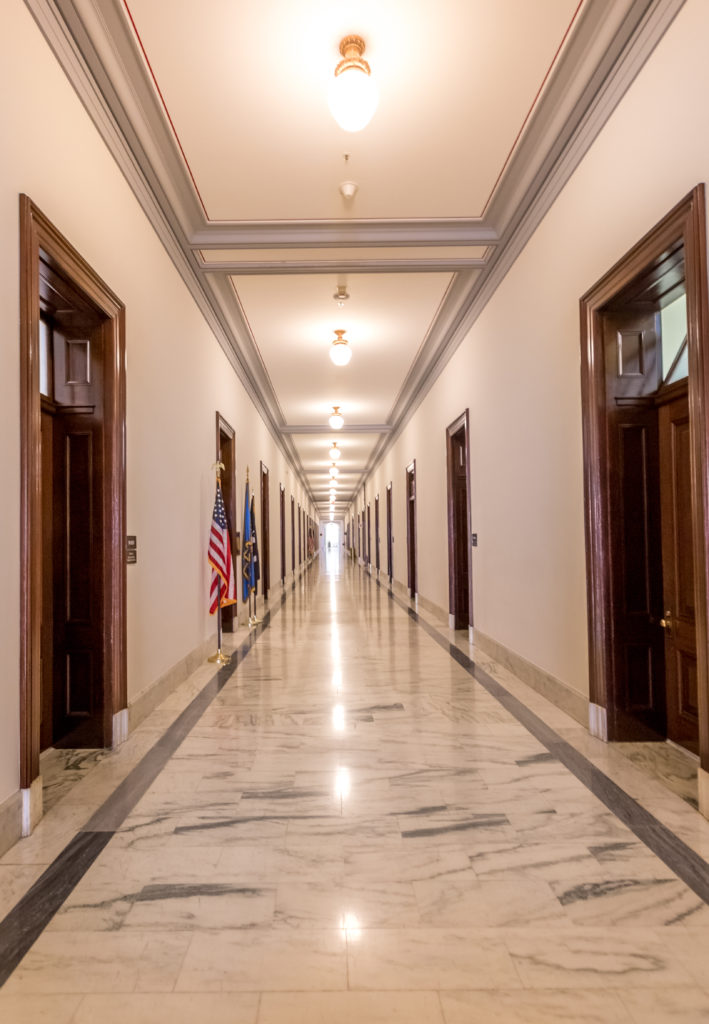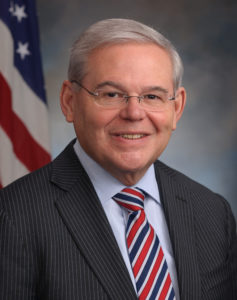
SCRS, other groups urge easier PPP forgiveness, express concern on SBA loan necessity reviews
By onAssociations | Business Practices | Legal | Market Trends
The Society of Collision Repair Specialists partnered with separate coalitions of trade groups this week to seek two pieces of relief related to the Paycheck Protection Program forgiveness process.
SCRS and the two assortments of associations petitioned U.S. House Speaker Nancy Pelosi, D-Calif.; Senate Majority Leader Mitch McConnell, R-Ky.; House Minority Leader Kevin McCarthy, R-Calif.; and Senate Minority Leader Chuck Schumer, D-N.Y., in separate letters.
One letter asked for oversight into the Form 3509 Loan Necessity Questionnaires the Small Business Administration and Treasury Department established for small businesses who borrowed $2 million or more.
The associations argued that it “presents two fundamental policy concerns: a focus on the wrong timeframe during which need for the PPP loan must be assessed and an apparent reliance on assessing the good faith certification based on information unrelated to what the borrower was asked to consider.” They also described a fear that that other borrowers could suddenly face a new review process.
The trade groups sent a copy of this letter to the SBA and Treasury as well. They asked the two agencies to temporarily halt the questionnaires “while we collectively address these issues and work together toward a better solution.”
A letter by the other association coalition asked Pelosi, McConnell, McCarthy and Schumer to “immediately address the overburdensome Paycheck Protection Program (PPP) forgiveness process before the end of the year.” They urged the congressional leaders’ support for existing legislation that would allow borrowers of $150,000 or less to easily have the loans forgiven.
Automatic PPP forgiveness
Representatives and senators are attempting to negotiate another mega-stimulus package of COVID-19 relief which might contain a PPP forgiveness provision. However, there’s no reason why they also couldn’t knock out “low-hanging fruit” — narrow bills containing individual noncontroversial bits of relief.
According to the trade groups, this could include the bipartisan Senate Bill 4117 and House Resolution 7777, both of which offer automatic loan forgiveness for small businesses who borrowed $150,000 or less under the PPP initiative. S. 4117 has 32 sponsors from both the Democratic and Republican parties. H.R. 7777 has 136 sponsors and continued to draw a mix of Democrats and Republicans through October and this month.
(Technically, the bill is a little unclear. It alternately calls for loans of “under $150,000” and “not more than $150,000” to be forgiven easily. So the threshold is technically either $149,999.99 or $150,000. A press release featuring the Senate sponsors indicates they meant to include loans of $150,000, so we’re using that figure.
Inquiries to Pelosi, McConnell, McCarthy and Schumer about passing this and other measures rather than wait for an omnibus bill have not yet been returned.
“On behalf of our members and the millions of small businesses we serve, we urge you to improve the PPP forgiveness process and support streamlined forgiveness efforts,” the trade groups wrote to the leadership.
Nearly 87.3 percent of the 19,681 Paycheck Protection Program recipients through June 30 in the “Automotive Body, Paint, and Interior Repair and Maintenance” segment received less than $150,000, according to a Repairer Driven News analysis of Small Business Administration data. (It’s possible still more companies in the industry participated; shortly after our analysis, Congress extended the program through Aug. 8.) Another nearly 9.7 percent received between $150,000 and $350,000, The exact number of industry companies who received precisely $150,000 is unavailable; the SBA only describes companies in terms of dollar ranges starting at $150,000.
Research by AQN Strategies has found society would come out ahead if all loans $150,000 and under were forgiven — even if some of the recipients should have paid back some of the money.
AQN mentioned the complexity of the original 11-page forgiveness application and instructions released by the Small Business Administration on May 15.
AQN pointed out that a form like the original cost the small business $2,000-$4,000 in time or third-party expense and causes banks to lose money when smaller-dollar loans mature.
However, the government in mid-June released an “EZ” version involving a three-page form (one page is optional) and four pages of instructions. The SBA in October then released an even easier 3508S form for borrowers of $50,000 or less. It’s one page plus the second optional page of demographic questions and is accompanied by three pages of directions.
Nevertheless, one of the associations in this week’s letter warned in October that even the “EZ” process still would be unduly burdensome for small businesses.
“While we appreciate SBA and Treasury attempting to streamline the forgiveness process, it is apparent Congressional action is needed for the true streamlined forgiveness mom-and-pop businesses need,” Consumer Bankers Association CEO Richard Hunt said in a statement. “This newest process still requires a significant investment of time and resources from small business owners – resources which could be better spent paying their employees and supporting local economies.”
Under S. 4117, $150,000-and-less borrowers would merely need to submit a “one-page online or paper form, to be established by the Administrator not later than 7 days after the date of enactment of this subsection, that attests that the eligible recipient complied with the requirements under section 7(a)(36) of the Small Business Act (15 U.S.C. 636(a)(36)).”
Banks wouldn’t be held responsible for any small businesses who lied on the form. The government could only pursue enforcement against recipients if the business “commits fraud or expends covered loan proceeds on expenses that are not allowable under section 7(a)(36)(F) of the Small Business Act (15 7U.S.C. 636(a)(36)(F)),” according to the bill.
“Additionally, passing such legislation that would expand the hold harmless protections for lenders will provide financial institutions that originated and currently service PPP loans the opportunity to focus their time and energy on providing much-needed credit and financial services to individuals and businesses by creating regulatory certainty for PPP loans in the future,” the trade groups wrote.
“The PPP forgiveness process has already begun for banks and will continue for them and for millions of American businesses in the coming months. Businesses have been patiently awaiting for Congress to act, hoping that an improved and streamlined forgiveness process will ensure they can focus their time, energy, and resources back into their business and communities instead of allocating significant time and expense into completing complex forgiveness forms.”
Inquiries to sponsors U.S. Sen. Kevin Cramer, R-N.D.; Rep. Fred Upton, D-Mich.; and Rep. Chrissy Houlahan, D-Pa.; asking about the potential for their legislation to be passed on its own have not yet been returned. However, a representative of sponsor Sen. Bob Menendez, D-N.J., described the measure in terms of a broader stimulus package.
“We are hopeful, in the event a COVID stimulus package is agreed upon, that some form of streamlined PPP forgiveness process will be included,” Menendez’s deputy press secretary Chris Flores wrote in an email Thursday.
Be heard: Congressional contact information can be found here.
Questionnaire for $2M+ borrowers
Over on the higher end of PPP borrowing, SCRS and the other trade groups acknowledged that the SBA and Treasury long have expressed plans to review of PPP loans of $2 million or more. But “neither borrowers nor lenders could have anticipated the approach now laid out in the Loan Necessity Questionnaires,” they argued.
The questionnaire asks borrowers about its business performance and market conditions like government-ordered shutdowns since the loan occurred, according to the trade groups. These include inquires about gross revenue in the second quarter of 2020 — April to June — compared to the second quarter of 2019 and lockdown start and end dates. It also asks about capital improvement projects this year.
“These questions focus on the wrong timeframe,” the coalition wrote. “The borrower was asked to certify in good faith that economic uncertainty made the loan necessary at the time of the borrower’s application for the loan. The law required that the borrower self-assess to the best of its ability with the information it had at the time. Any circumstances that happened after the certification was made and throughout the pandemic should have no bearing on evaluating the borrower’s good faith statement at the time it made the certification.” (Emphasis coalition’s.)
One can see the concern. The language suggests that a business who in good faith took out a PPP loan during the uncertainty of late March could be penalized just because they didn’t struggle enough in June.
“Requiring submission of revenue and liquidity data appears to signal a bias against PPP borrowers that managed to survive or remain profitable despite the COVID-19 pandemic,” the groups wrote. “For many borrowers, it was the PPP loan that provided the means by which they could withstand the economic uncertainty they were facing. PPP loan requirements directed PPP borrowers to use the majority of loan funds to keep employees on their payrolls, giving them the ability to direct other available liquidity or revenue to other aspects of the ongoing operations of their business. If a PPP borrower emerges from the pandemic reporting steady or increased revenue with healthy liquidity and continuing employment, for that borrower and its employees, the program was successful in meeting its goal to help sustain the economy. We are worried that the questionnaire implies conclusions in the opposite direction.”
The groups also expressed itself “surprised at inquiries that could veer into the personal finances of small business owners, even seeking exact dollar amounts of all cash on hand with supporting documentation. The CARES Act did not include a means-based test, revenue reduction test, liquidity test, or any other metric to assess financial standing in order to assign prioritization of PPP loans to certain borrowers over others. To the contrary, Congress explicitly directed that the requirement in other SBA loan programs that the borrower be unable to obtain credit elsewhere shall not apply to PPP loans.”
As the group alludes, the sentiment of the CARES Act seemed to be to get the money out to folks fast so employees could be kept on payrolls. Congress didn’t want businesses bogged down in red tape.
Twelve auto body-related companies received $2 million or more in PPP loans through June 30 and would be subject to the questionnaires criticized by SCRS and the other groups, based on our PPP analysis.
The trade groups also pointed out that the SBA was asking borrowers and lenders to comply with a process that through Nov. 25 was still open to public comment on its necessity.
The SBA is soliciting input on Form 3509 and “(a) whether the collection of information is necessary for the agency to properly perform its functions; (b) whether the burden estimates are accurate; (c) whether there are ways to minimize the burden, including through the use of automated techniques or other forms of information technology; and (d) whether there are ways to enhance the quality, utility, and clarity of the information.”
The trade groups proposed a simpler solution.
“If the agencies want to inquire further into the necessity or suitability of a PPP loan for certain categories of eligible small businesses, we recommend that a better approach would be to ask the borrower to provide a narrative statement with any documentation the borrower believes appropriate to support the basis for its good faith certification that the uncertainty in economic conditions made the PPP loan necessary to support the ongoing operations of the business,” the coalition wrote. “This approach would satisfy commitments made by the agencies to review certain loans beyond the Forgiveness Application, but would not impose major changes to PPP criteria in an after the fact manner that could penalize small businesses that played by the rules. Most importantly, this simple, understandable narrative format would honor what was required of borrowers by the CARES Act.”
Neither the Treasury Department nor the SBA have yet responded to requests for comment on the trade groups’ questionnaire letter.
Be heard: Congressional contact information can be found here. Public comment on PPP information gathering can be left here through Nov. 25.
More information:
SBA Form 3509 Loan Necessity Questionnaire (courtesy AICPA Journal of Accountancy)
Business organizations’ letter to congressional leadership on simplified PPP forgiveness
Images:
The U.S. Capitol is shown. (lucky-photographer/iStock)
The U.S. Senate Russell Office Building is shown. (dkfielding/iStock)
U.S. Sen. Bob Menendez, D-N.J. (Provided by Menendez’s office)


